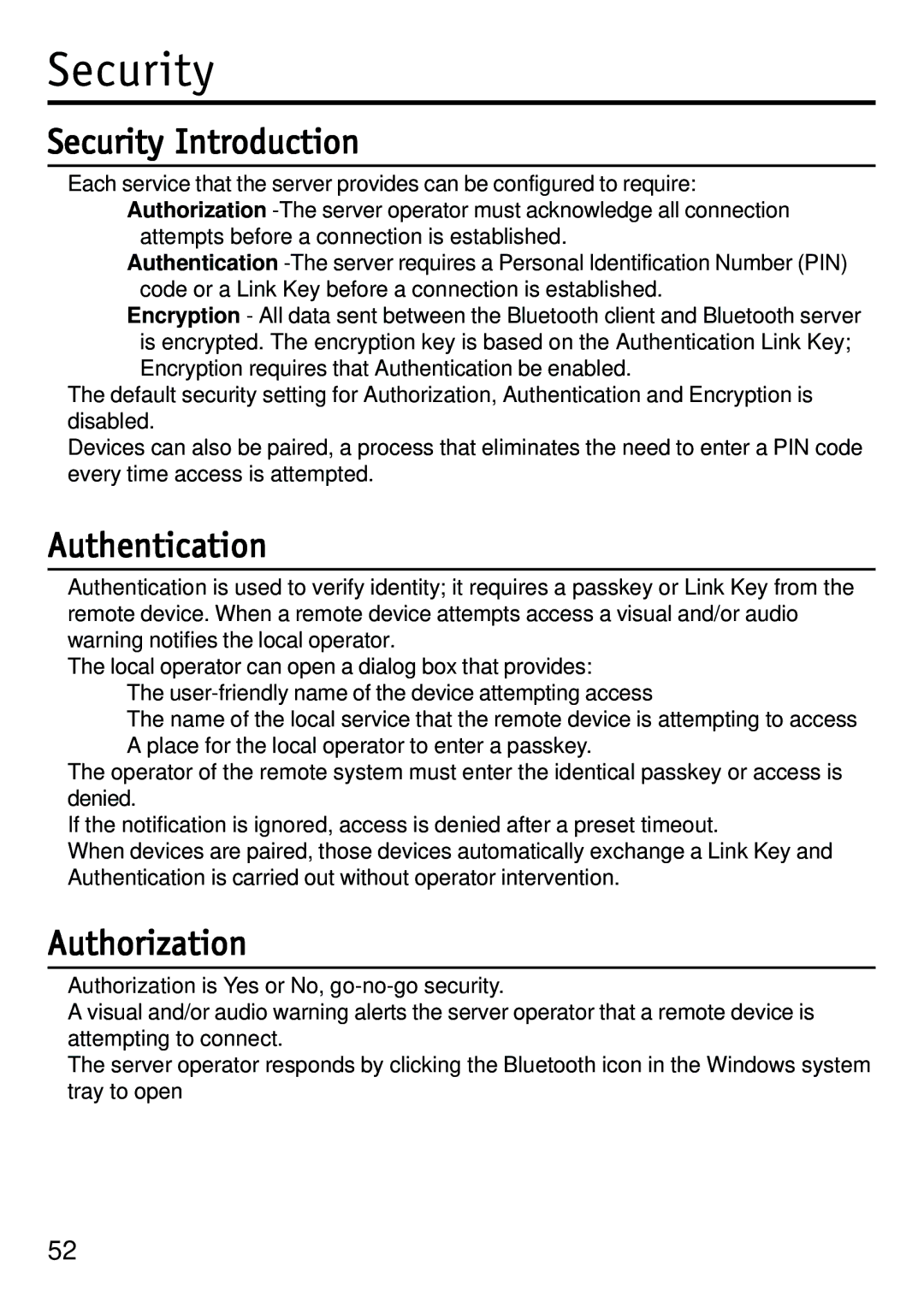
Security
Security Introduction
Each service that the server provides can be configured to require:
•Authorization
•Authentication
•Encryption - All data sent between the Bluetooth client and Bluetooth server is encrypted. The encryption key is based on the Authentication Link Key; Encryption requires that Authentication be enabled.
The default security setting for Authorization, Authentication and Encryption is disabled.
Devices can also be paired, a process that eliminates the need to enter a PIN code every time access is attempted.
Authentication
Authentication is used to verify identity; it requires a passkey or Link Key from the remote device. When a remote device attempts access a visual and/or audio warning notifies the local operator.
The local operator can open a dialog box that provides:
•The
•The name of the local service that the remote device is attempting to access
•A place for the local operator to enter a passkey.
The operator of the remote system must enter the identical passkey or access is denied.
If the notification is ignored, access is denied after a preset timeout.
When devices are paired, those devices automatically exchange a Link Key and Authentication is carried out without operator intervention.
Authorization
Authorization is Yes or No,
A visual and/or audio warning alerts the server operator that a remote device is attempting to connect.
The server operator responds by clicking the Bluetooth icon in the Windows system tray to open
52
